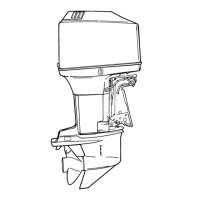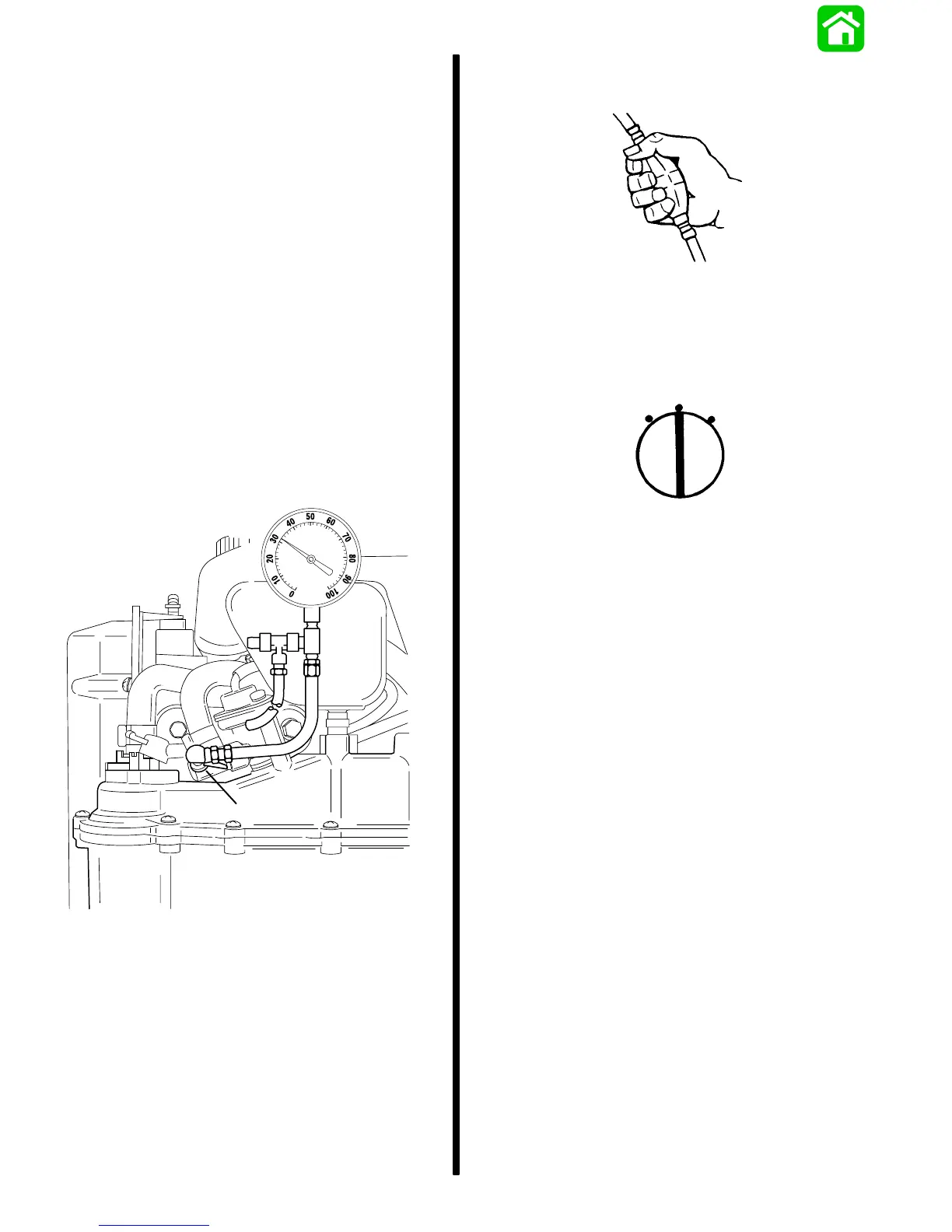3D-26 - FUEL SYSTEMS 90-824052R3 JUNE 2002
EFI System Test Procedures
Fuel Gauge Connection/Pressure
Test
IMPORTANT: When checking fuel pressure while
engine is running, fuel pressure may fluctuate.
Fuel pressure fluctuation (i.e. 34 to 36 psi “234 to
248 kPa”) is common, as the regulated pressure
is a differential between fuel rail and manifold
vacuum.
Purpose: Checking fuel manifold pressure ensures
that fuel under usable pressure is available to
the fuel injectors. This test isolates the prob-
able cause as either a fuel delivery or EFI
electrical system failure.
IMPORTANT: Fuel pressure should be monitored
through full RPM range to determine fuel supply
problems at high engine speeds.
1. Connect fuel pressure gauge to induction
manifold pressure port.
55180
a
a - Pressure Port
2. Prime engine using fuel primer bulb.
3. Turn ignition key switch to “On” position.
OFF
ON
START
4. Operate electric fuel pump for approximately 10
seconds.
NOTE: Fuel pump will only operate for approximately
30 seconds. By turning the key switch to “OFF” and
then back to “ON” the pump will operate for 30
seconds more.
5. Take reading on fuel pressure gauge.
Results: If pressure reading is 34 to 36 psi (234 to
248 kPa), the electric fuel pump is providing
fuel with enough pressure to be used by the
injectors. Pump malfunction is not the cause
of EFI trouble.
If fuel pressure is well below 34 psi (234 kPa), fuel
delivery to electric fuel pump, fuel pump failure or
other related problem exists. Follow low/high fuel
pressure flow charts.
If fuel pressure is above 36 psi (248 kPa) go to fuel
pressure regulator test.

